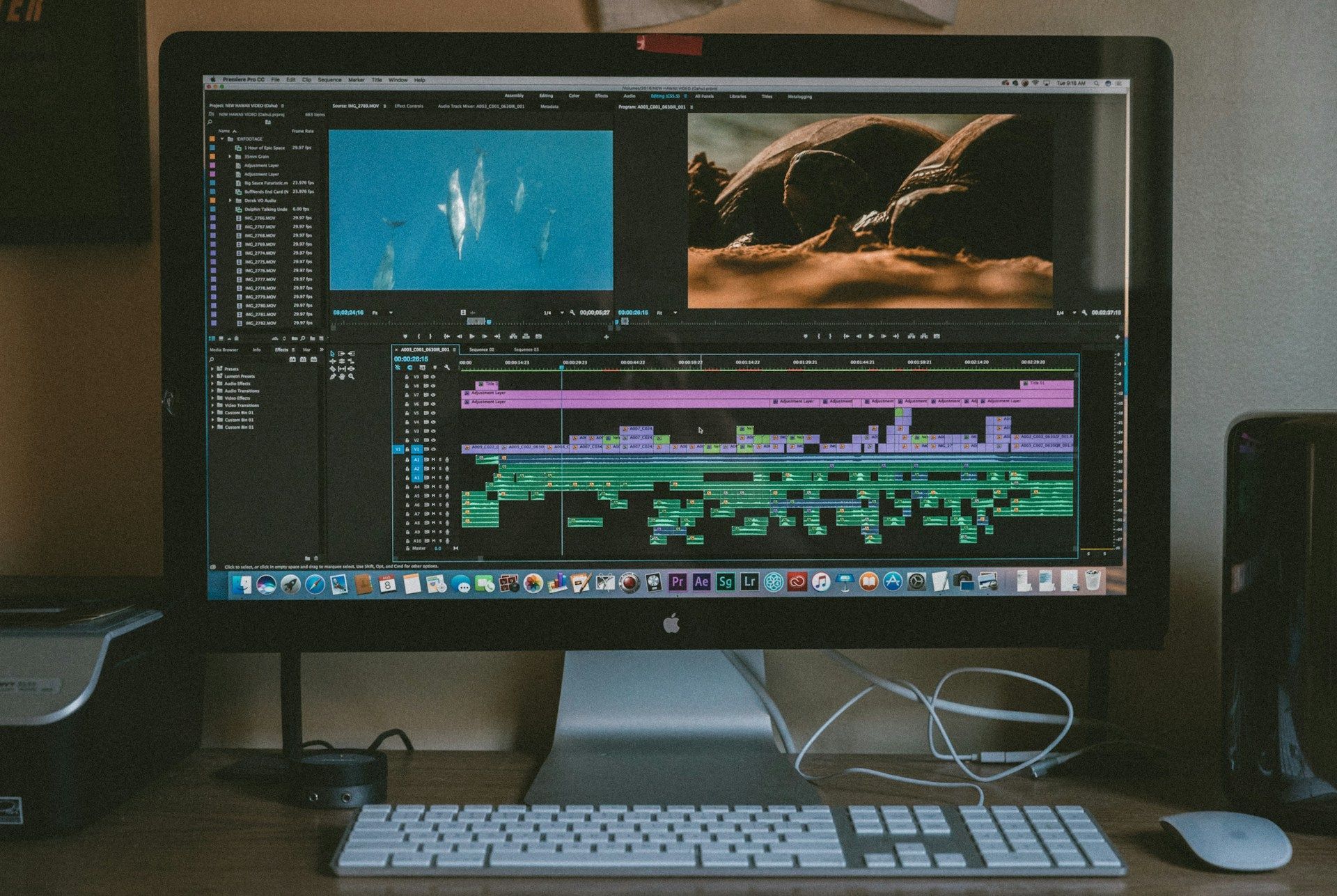Fixing Website Layout Issues Across Devices
Building a website that looks good and works correctly on every screen is no longer optional. Whether someone visits on a phone, tablet, or desktop computer, what they see and how they interact with your site matters. Layout issues can throw people off fast, causing them to leave before they even get the information they came for. That’s why getting your design to work across all devices can make a real difference in how your website performs.
Think about your own site. Does your homepage look great on a laptop but cluttered on a phone? Are buttons easy to press on a tablet, or do they overlap with other elements? These kinds of layout problems can leave users frustrated and unwilling to stick around. Let’s take a closer look at what causes these issues and how they can be fixed before they hurt your user experience.
Understanding Device-Specific Layout Challenges
Different devices have very different screen sizes and resolutions. That means the way your website appears on a large computer monitor won’t be the same as how it looks on a small phone screen. The problem is, not all websites are designed to adjust correctly between sizes. That’s when layout issues start to show up.
Some common layout problems across devices include:
- Text that’s too small or too large
- Images that don’t resize or crop properly
- Menus that are hard to tap on mobile
- Elements that stack in the wrong order
- Forms that are hard to fill out without zooming
- Pop-ups that don’t close or block the screen
Let’s say your website has a clean menu across the top on desktop, but on mobile, that menu turns into a long, hard-to-scroll list that covers the entire page. That’s bad for users and for your business. People won’t waste time trying to figure it out. They’ll just leave.
Each device presents its own set of user expectations too. Desktop visitors usually expect a full, expanded view, while phone users want fast access to key information without needing to zoom or swipe endlessly. When a layout doesn’t fit the screen or forces people to hunt for things, it defeats the purpose of having a professional site.
When layout problems get in the way, users tend to blame the business, not the device or browser. That’s why it makes sense to prioritize fixing these issues early and check the design from more than one angle. Understanding how devices work differently helps you build a smoother experience that doesn’t break apart from screen to screen.
Best Practices For Responsive Web Design
Responsive web design helps solve many layout issues by making sure your site adjusts to fit whatever screen it’s viewed on. The idea is simple: one website, many device sizes. But pulling that off takes a good deal of smart planning on the backend.
Here are a few of the best ways to make your site more responsive:
1. Use flexible grids. Instead of fixed-width designs, flexible grids adjust content depending on screen size. This stops elements from getting squished or overlapping.
2. Add fluid images. Fluid images are set up to scale with your layout, so they don’t blow up too big or shrink too tiny based on screen size.
3. Apply media queries. Media queries help the browser know when to switch layout rules. You can create specific rules for phones, tablets, and desktops.
4. Break up content into sections. Structuring your content into clear, stackable sections helps it feel more natural across devices and keeps the layout clean.
5. Stick to mobile-first design. With so much traffic coming from phones, it’s smarter to design for mobile first, then scale up for larger screens.
Responsive design isn’t just about the layout either. Think about touch-friendly navigation, readable font sizes, and buttons with enough space between them. All of these play a part in helping your site load fast and look right on every screen.
Hiring a team that understands web design and development can save time and make sure these methods are applied correctly from the start. By designing your site to respond to its environment, you make sure it works for everyone, no matter where or how they’re viewing it.
Testing And Tools For Multi-Device Compatibility
Even a well-designed site can run into layout problems if it isn’t tested often. Layout shifts, broken menus, or scroll issues can pop up when browsers or devices update. That’s why testing across multiple screen sizes and platforms is one of the best ways to keep your website working like it should.
Luckily, there are tools built for that. Some popular ones include:
- Google’s Mobile-Friendly Test: Easy to run and shows how a page performs on mobile
- BrowserStack: Lets you test your site on real devices and browsers without needing to own all of them
- Responsive Design Checker: A web-based tool that shows how your site responds at different breakpoints
To get started, pick a few key pages from your site like your homepage, contact page, and a service or product page. Run them through these tools and note anything that looks off. Look for buttons that are hard to tap, images that shift, and text that’s too small or cut off.
After spotting trouble areas, work with your web team to adjust code or restructure elements. For visual issues, small design tweaks may be enough. Technical problems may need changes to your CSS or layout grids.
Another good habit is checking after any content updates. Adding a new banner photo or blog section could push elements out of place on mobile. You don’t always see problems right away unless you’re checking across a wide range of screen sizes.
It’s also smart to make time for routine checks. Maybe once a month or during bigger seasonal updates. A quick glance across a few devices can catch layout glitches before users do. That kind of proactive testing adds up, keeping your site easier to use and aligned with new devices as they hit the market.
Professional Web Design And Development Can Make It Easier
There’s a lot that goes into fixing layout problems across varying devices. And while steps like mobile-first design and regular testing help, creating and maintaining a fully responsive site is not always straightforward.
When layout issues get layered with technical ones like slow load speeds or broken forms, it’s usually time to bring in help. A skilled web design and development team does more than apply a one-size-fits-all theme. They build a strong base, with layouts that flex and shift depending on the screen. They also keep track of code updates, accessibility needs, and browser testing to make sure nothing falls through the cracks.
For example, if you had a services page that displayed fine on desktop but kept cutting off on tablets, a designer would look beyond just shrinking it down. They might redesign the spacing, use hidden collapsible sections for mobile, or adjust how images load to better fit the screen.
A good team also looks at behavior patterns. Are most of your visitors on mobile? Are they bouncing after a few seconds because the text layers over an image or the call-to-action is hidden at the bottom? Those are the kinds of patterns professionals watch for and then adjust the design to solve.
Even if you already have a site up and running, a full audit from a developer can uncover layout trouble spots you didn’t know existed. That way, you’re not guessing. You’re fixing real problems that might be costing you trust, time, and traffic.
It helps to think long-term too. Responsive issues today may be different tomorrow, especially with new devices or browser updates. Having a trusted partner in your corner means your website stays updated and flexible no matter what changes come next.
Make Sure Your Layout Works For Everyone
Building a layout that fits every screen doesn’t happen by accident. Whether it’s problems like overlapping buttons on phones or menus that disappear on tablets, layout issues affect how people interact with your business. These small problems can lead to big frustration, and worst of all, people might stop engaging with your site altogether.
Taking steps like designing responsively, testing over time, and working with experienced web developers stops the problems before they hurt your performance. It also shows your visitors that you’ve thought about how they experience your site, no matter how they access it.
If your layout isn’t working across every device, or if you’ve sensed that users are slipping away because something doesn’t look or feel right, it makes sense to address it soon. Getting it right helps form better connections, builds trust, and keeps people moving through your site the way they should. Fixing layout issues isn’t just a technical task. It supports the bigger picture of making your site helpful, effective, and easy to use.
For those ready to enhance the way their site performs across every device, getting professional help can make all the difference. Oddball Creative is here to offer guidance and expertise in optimizing your
web design and development. With our support, you'll ensure your site stays user-friendly and engaging, no matter how it's accessed. Explore how a better layout can improve your site's reach and user satisfaction.



